Seeing the giant coastal redwoods (sequoia sempervirens) has always been on my bucket list. You would think that someone who has lived most of her life in California would have checked that item off her list after all these years. Somehow, I have never made it there even though I made many trips over the years from Southern California to Northern California. I had no idea when I moved to Pine Grove that I would be barely more than an hour drive from the coastal redwoods’ relative, the giant sequoias in Calaveras Big Trees State Park (sequoiadendron giganteum). In fact, I didn’t even know they had relatives.
The giant sequoias, also knows as sierra redwoods, are the largest living thing ever to exist on earth! That statement alone just blows me away. The coastal redwoods grow taller but the giant sequoias are more massive. They date back over 180 million years to the age of the dinosaurs and can live 3,000 years. They were once widespread over much of the Sierra Nevada but now only grow naturally in 75 groves on the western slope.
The giant sequoias, also knows as sierra redwoods, are the largest living thing ever to exist on earth! Click To TweetI read an article about Calaveras Big Trees State Park in a local paper and knew I had to go even though it is December and the daytime temperatures are in the 40s. It turns out, this was a perfect time to go to Calaveras Big Trees to see the giant sequoias. Sunshine was predicted for the day and I knew the local mountains hadn’t gotten much snow during the storm we had a few days prior. Kelly and I bundled up in our winter coats and off we went!
Calaveras Big Trees State Park and the Giant Sequoias
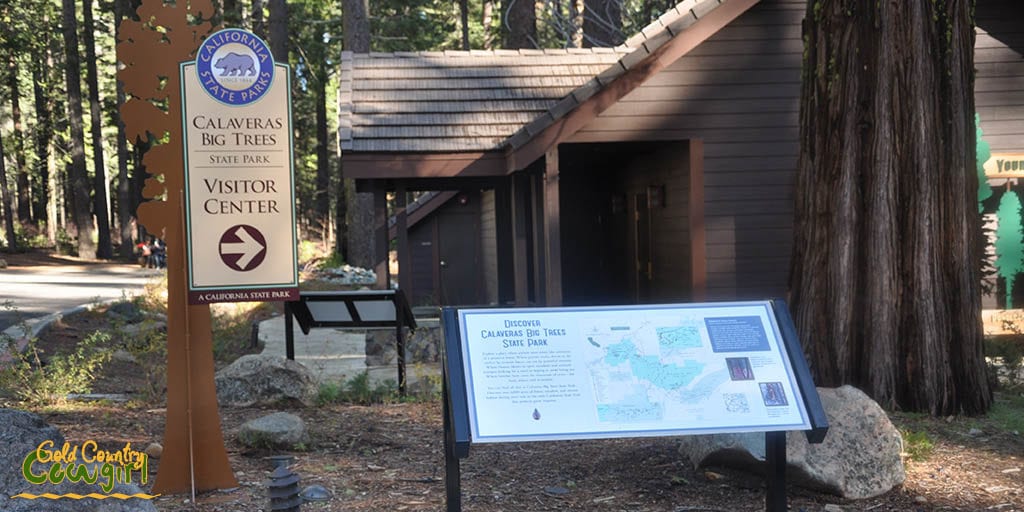 Calaveras Big Trees State Park is about 15 miles northeast of Murphys and three miles north of Arnold on Highway 4. Entry fee is $10 per vehicle or $9 if one passenger is over 62. The main park road and all campgrounds are closed during the winter but the North Grove area of the park is open. The visitor center is open year round with hours varying depending on the season.
Calaveras Big Trees State Park is about 15 miles northeast of Murphys and three miles north of Arnold on Highway 4. Entry fee is $10 per vehicle or $9 if one passenger is over 62. The main park road and all campgrounds are closed during the winter but the North Grove area of the park is open. The visitor center is open year round with hours varying depending on the season.
Visitor Center

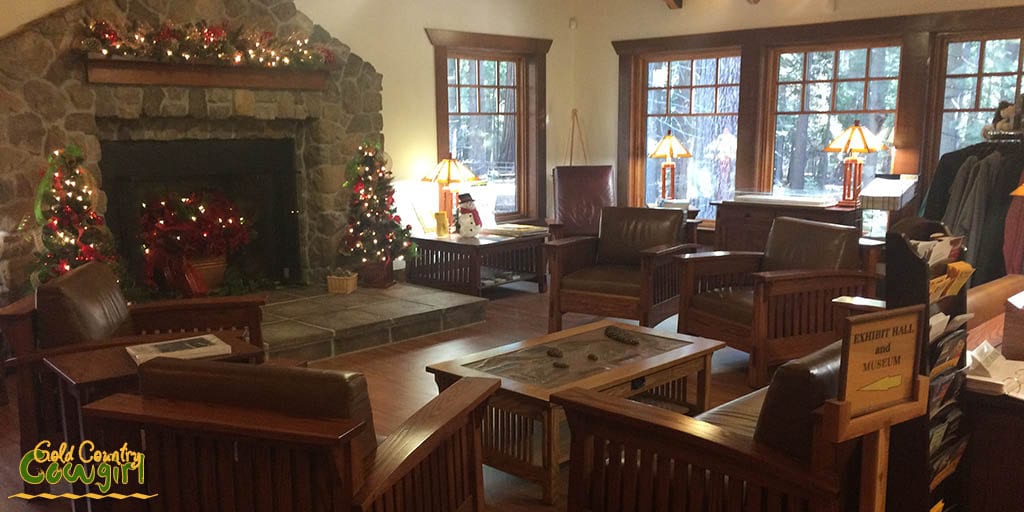 The visitor center is gorgeous and has lots of cute items for sale. You can also get your trail guides here. I highly recommend that you spend the 50¢ for the Guide to the Calaveras North Grove Trail. It’s 12 pages long and a wealth of information. I know it added tremendously to our enjoyment of the trail.
The visitor center is gorgeous and has lots of cute items for sale. You can also get your trail guides here. I highly recommend that you spend the 50¢ for the Guide to the Calaveras North Grove Trail. It’s 12 pages long and a wealth of information. I know it added tremendously to our enjoyment of the trail.
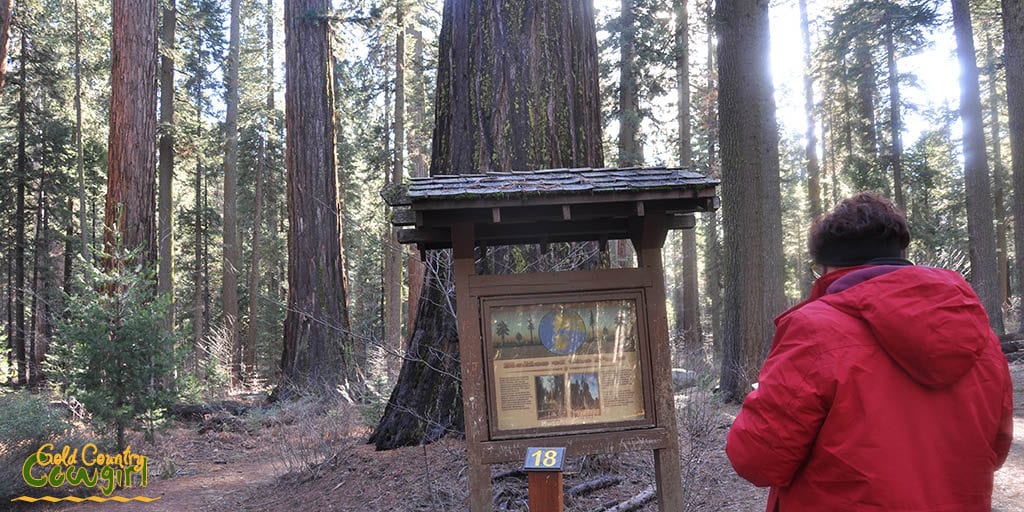 The points of interest on the trail are all marked with numbers but the description for each is in the guide. Only a few places have kiosks with additional information.
The points of interest on the trail are all marked with numbers but the description for each is in the guide. Only a few places have kiosks with additional information.
The exhibit hall and museum, which are attached to the visitor center, had some great displays. I loved that there were so many old photos. The amount of information on the history of the park and the giant sequoias themselves was almost overwhelming. This post will barely scratch the surface of the highlights but I hope it piques your interest in these ancient trees.
North Grove Trail
 After we soaked up all the information we could in the museum, we headed out on the North Grove Trail. Most things at the park are wheel chair accessible including some of the trails.
After we soaked up all the information we could in the museum, we headed out on the North Grove Trail. Most things at the park are wheel chair accessible including some of the trails.
The Discovery Tree
One of the first things you come to on the trail is the big stump. In 1852, a hunter named Augustus T. Dowd stumbled upon the grove of giant trees. He eventually coaxed folks to make the 20-mile trip into the mountains to see his Discovery Tree which was the largest tree in the North Grove. Word of the “Tree Giants” spread and in 1853, the tree was stripped of its bark and felled by speculators. The tree was over 25 feet at its base so no saw was large enough to fell it. They had to use other tools of the era. It took five men 22 days to drill all the holes for the pump augers and wedges. You can see all the grooves made from the drilling.
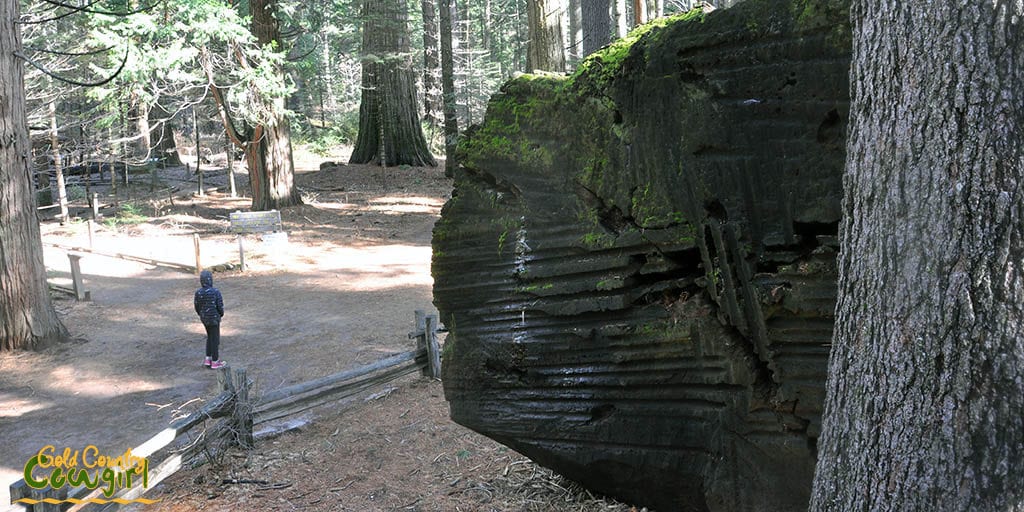 The stump, which I am standing on for the above photo, was planed smooth so it could be used as a dance floor. A two-lane bowling alley and bar were built on the fallen trunk. When they counted the rings of this 280 foot tree they learned it was only 1,244 years old. They say that is relatively young for such a large sequoia. Many believe that, if allowed to live, this tree might rival the largest of the giant sequoias.
The stump, which I am standing on for the above photo, was planed smooth so it could be used as a dance floor. A two-lane bowling alley and bar were built on the fallen trunk. When they counted the rings of this 280 foot tree they learned it was only 1,244 years old. They say that is relatively young for such a large sequoia. Many believe that, if allowed to live, this tree might rival the largest of the giant sequoias.
Down the Trail
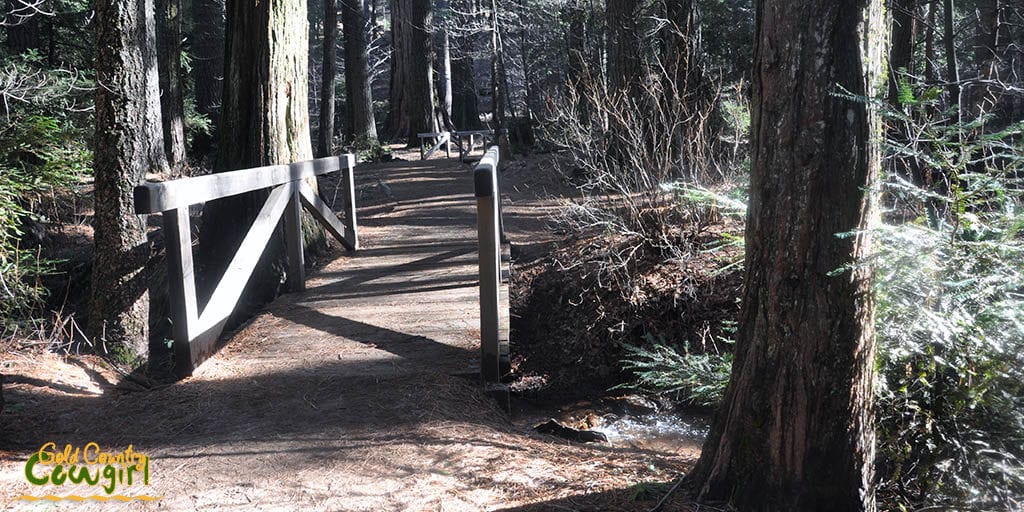 Several bridges cross the stream that meanders through the grove. We could hear it off and on as we walked along the trail.
Several bridges cross the stream that meanders through the grove. We could hear it off and on as we walked along the trail.
All along the trail, there are benches where you can sit to just appreciate the vastness of these magnificent trees. The trees on the right are the Siamese twins. They started out life so close together that the first 50 feet of their trunks merged and they look like one tree.

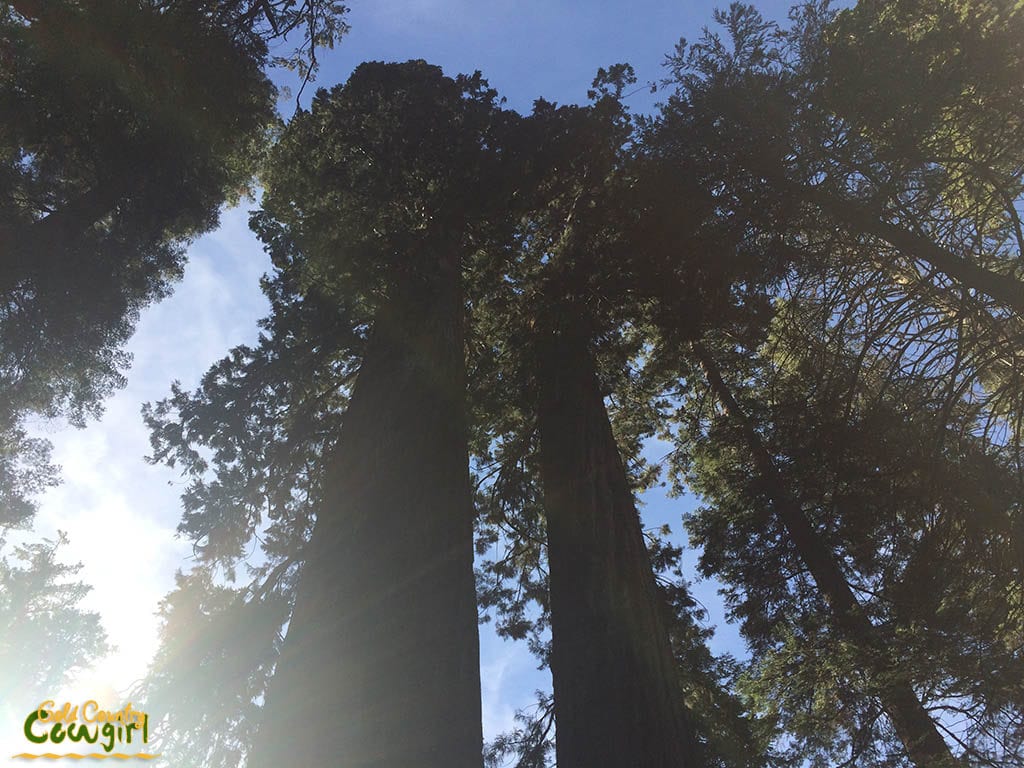 I loved this bench with the slanted back so you could easily look up to the tops of the trees. The trees are so tall that looking up is not an easy thing to do when you are at the base of the tree.
I loved this bench with the slanted back so you could easily look up to the tops of the trees. The trees are so tall that looking up is not an easy thing to do when you are at the base of the tree.

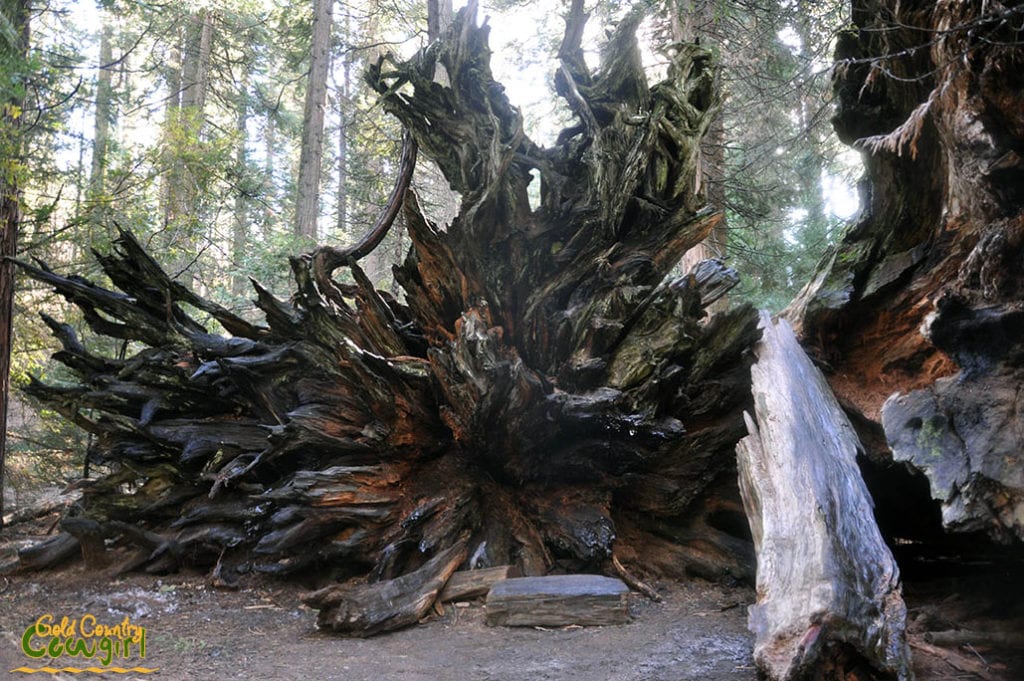 Mature giant sequoias have shallow, spreading roots rather than a long tap root. Although these roots extend only six to eight feet under the soil, they can spread out to cover as much as an acre.
Mature giant sequoias have shallow, spreading roots rather than a long tap root. Although these roots extend only six to eight feet under the soil, they can spread out to cover as much as an acre.
Father of the Forest
 This tree fell to earth long before the grove was discovered by Euro-Americans. The giant sequoias decompose very slowly due to the tannin in their wood. You can walk inside this tree, but the day we were there, there were several inches of water inside.
This tree fell to earth long before the grove was discovered by Euro-Americans. The giant sequoias decompose very slowly due to the tannin in their wood. You can walk inside this tree, but the day we were there, there were several inches of water inside.
Mother of the Forest
This tree was named Mother of the Forest for its beauty and size. As a reward, in 1854, it was stripped of its bark to be shipped back east for reassembly at exhibitions. It took a crew of men 90 days to skin the living tree of its outer bark.
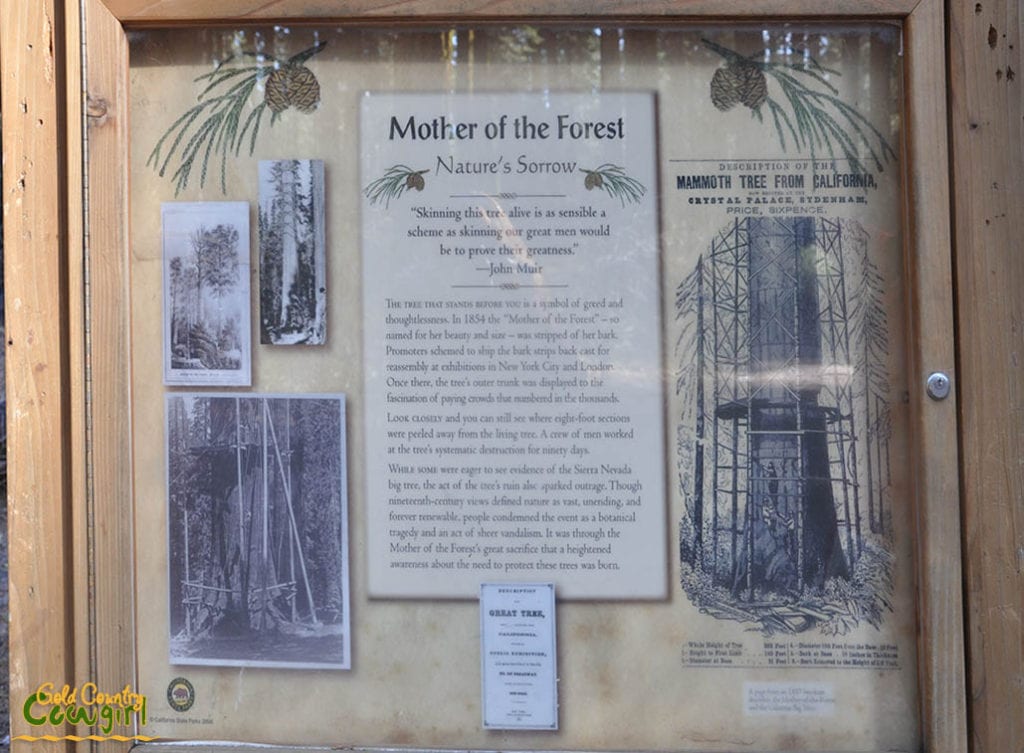 I look at this once magnificent tree and say, “How could they do that?” People looked on nature differently in those days, but the loss of this tree outraged enough people that a heightened awareness of the need to protect the trees was born. I know there are things we are doing to the earth today that, generations from now, they will look back on us and say, “How could they do that?”
I look at this once magnificent tree and say, “How could they do that?” People looked on nature differently in those days, but the loss of this tree outraged enough people that a heightened awareness of the need to protect the trees was born. I know there are things we are doing to the earth today that, generations from now, they will look back on us and say, “How could they do that?”
The Pioneer Cabin Tree
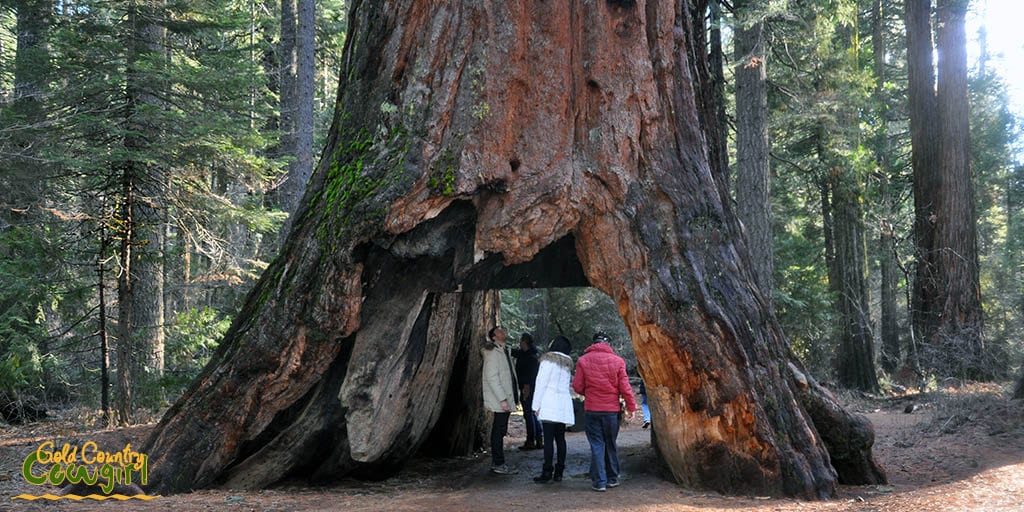 Nearby Yosemite Valley has giant sequoias too. As roads to Yosemite improved, increasing numbers of tourists began visiting the giant sequoias there. When the Wawona Tunnel Tree was carved out in the 1880s in Yosemite, the owners of the North Grove responded by doing the same to the Pioneer Cabin Tree. This tree was chosen because of its extremely wide base and large fire scar.
Nearby Yosemite Valley has giant sequoias too. As roads to Yosemite improved, increasing numbers of tourists began visiting the giant sequoias there. When the Wawona Tunnel Tree was carved out in the 1880s in Yosemite, the owners of the North Grove responded by doing the same to the Pioneer Cabin Tree. This tree was chosen because of its extremely wide base and large fire scar.
Because of the huge cut, the tree can no longer support the growth of a top. You can see the top lying on the ground to the right in the second photo above.
One branch near what is now the top still has green foliage so we know the tree is still barely alive. A kiosk at this site says, “Hanging on by a branch!” And yes, it really is leaning that much. The photo on the right is a close up of the huge fire scar.
UPDATE, January 8, 2017: Jim Allday, a volunteer at the park, reported that at around 2pm today the Pioneer Cabin Tree succumbed to nature and fell. It just couldn’t take all the rain and wind from the storm. Jim stated that no one heard it fall and it shattered on impact.
Up Close to the Giant Sequoias in Calaveras Big Trees State Park
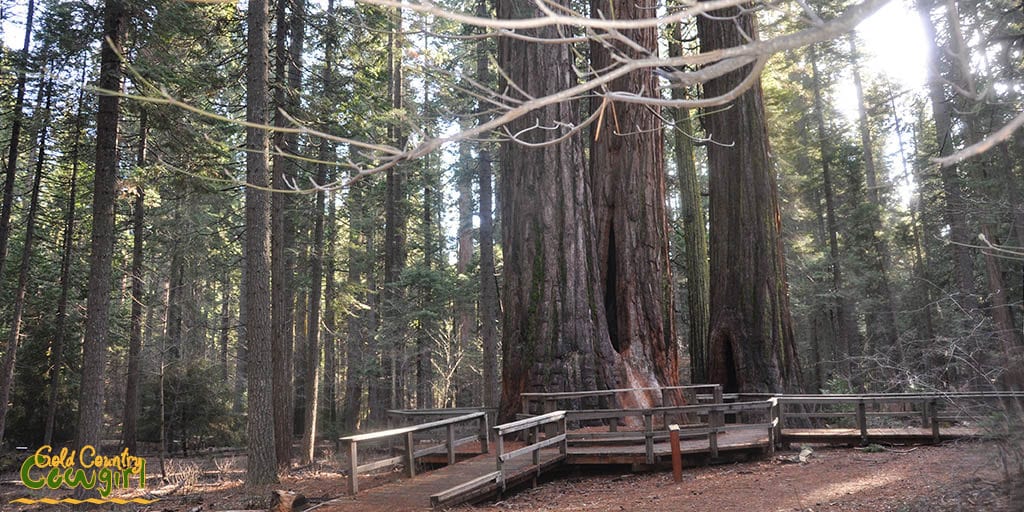 This platform, which is to keep you from walking over the shallow roots, was built around this group of trees so you can get up close and feel the trees. The bark is very fibrous. It didn’t feel at all like I expected.
This platform, which is to keep you from walking over the shallow roots, was built around this group of trees so you can get up close and feel the trees. The bark is very fibrous. It didn’t feel at all like I expected.
The End of the Trail
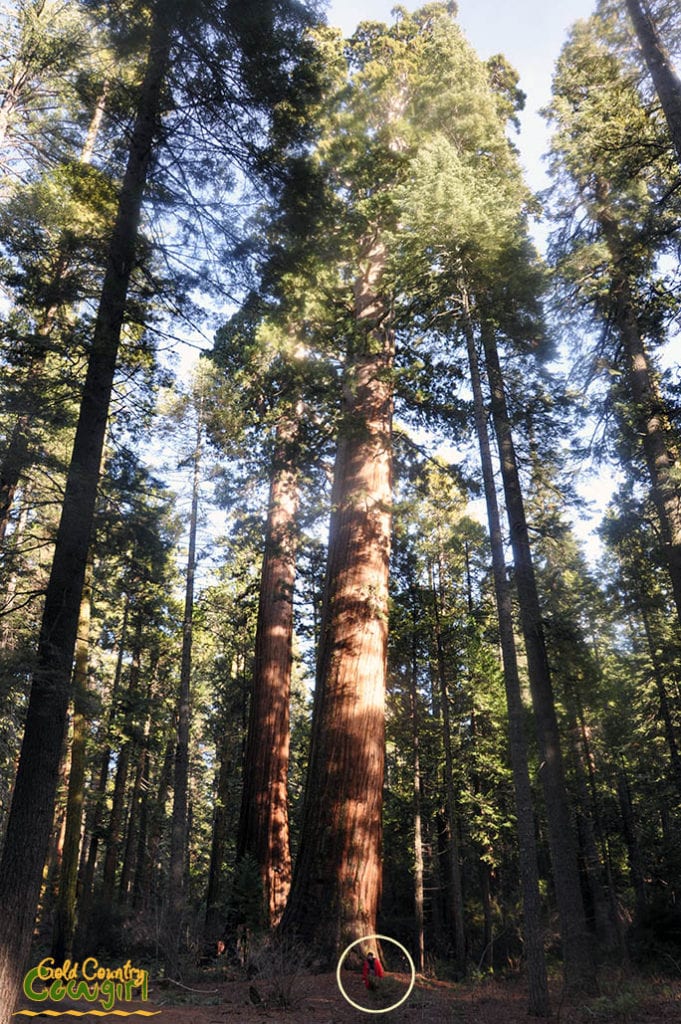 Near the end of the trail are two of the largest trees in the North Grove. Can you spot Kelly standing at the base?
Near the end of the trail are two of the largest trees in the North Grove. Can you spot Kelly standing at the base?
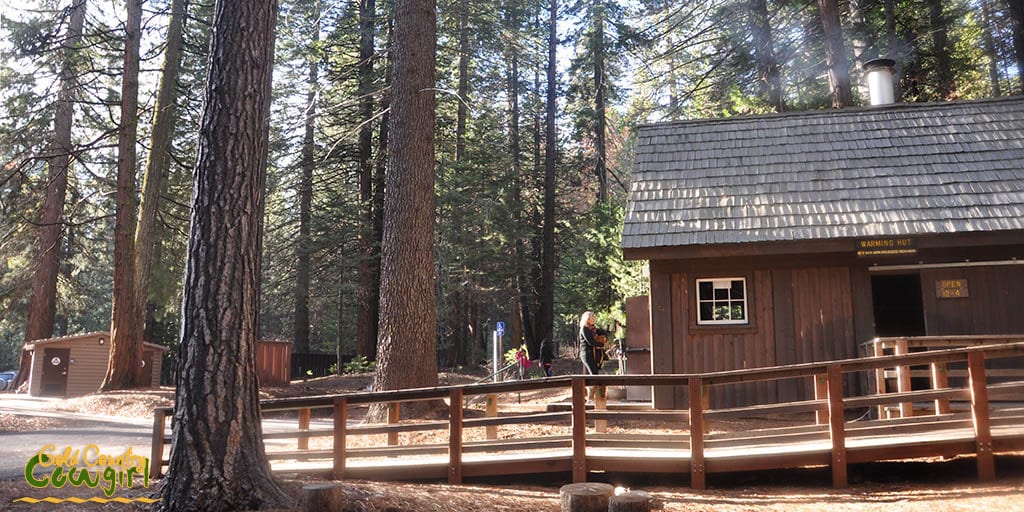 It took us nearly two hours to walk the 1.67 mile trail because we made so many stops! The sights were incredible and the information in the guide was so interesting.
It took us nearly two hours to walk the 1.67 mile trail because we made so many stops! The sights were incredible and the information in the guide was so interesting.
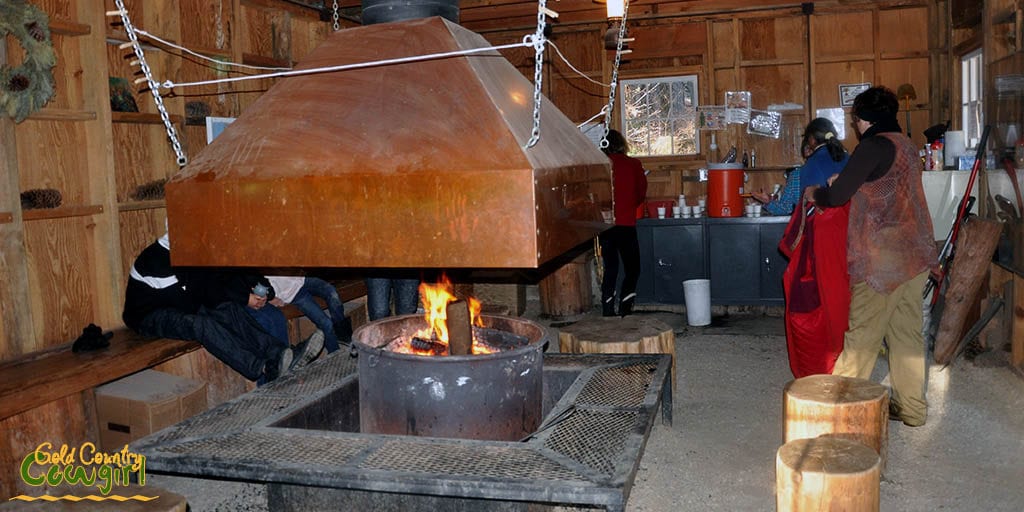 Even though we never got cold, the warming hut at the end of the trail was a welcome respite. The friendly volunteers were serving up hot cider and hot chocolate. The roaring fire was awesome.
Even though we never got cold, the warming hut at the end of the trail was a welcome respite. The friendly volunteers were serving up hot cider and hot chocolate. The roaring fire was awesome.
We enjoyed the day so much that we are definitely planning to go back. I’m looking forward to returning in the spring when the South Grove will be open. It contains more than 1,000 giant sequoias including the park’s two largest trees.
Have you visited the coastal redwoods or any of the giant sequoias? Did this story pique your interest about the giant sequoias in Calaveras Big Trees State Park?
Until next time…







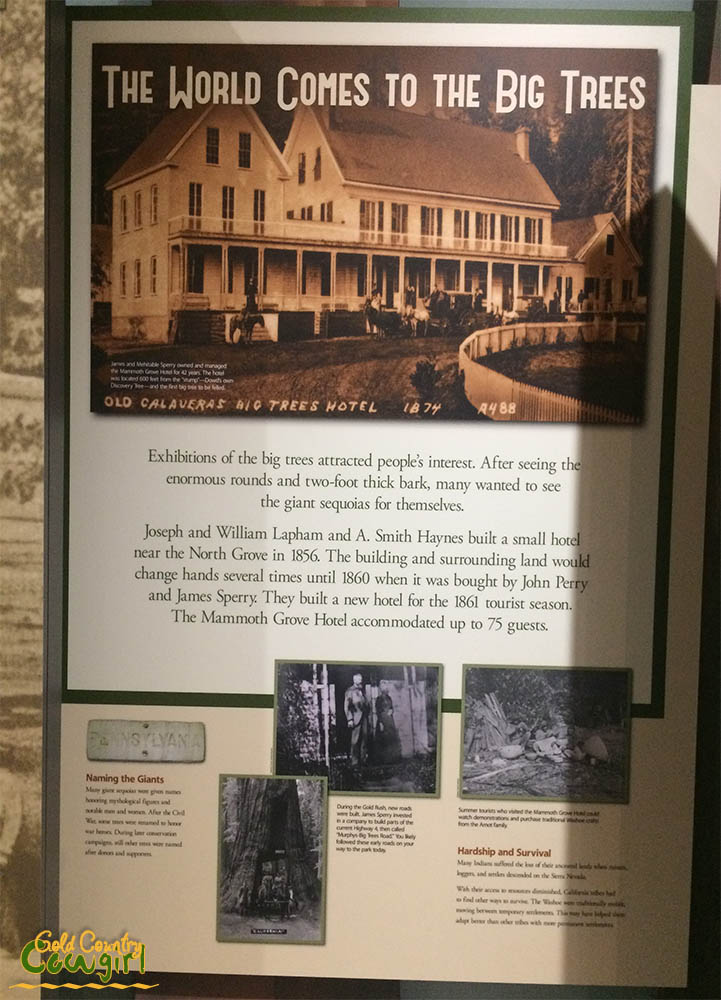

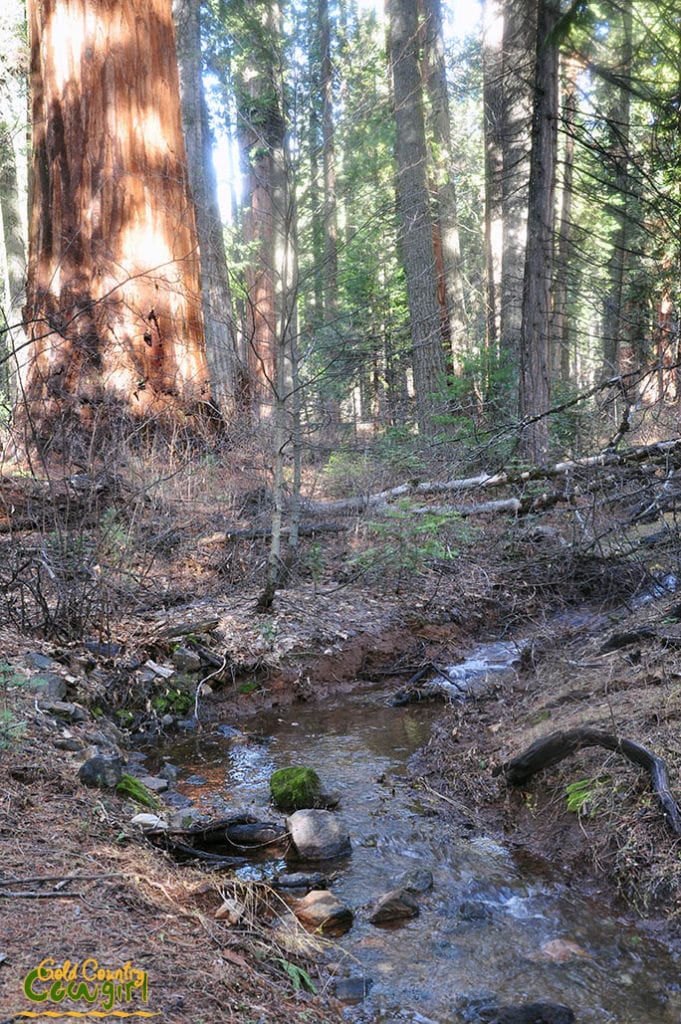

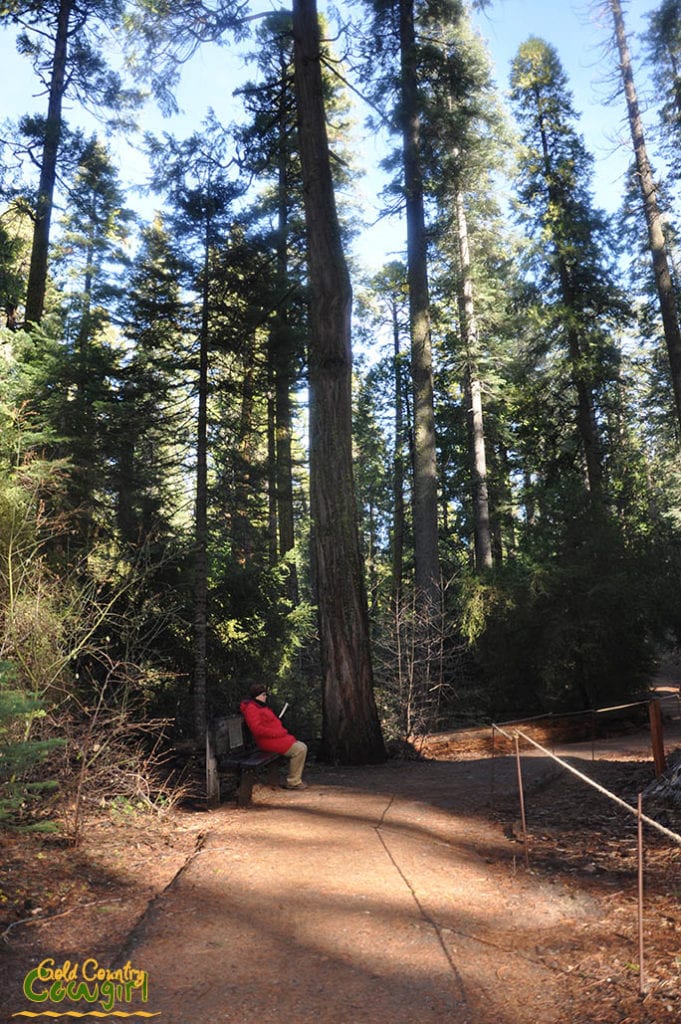
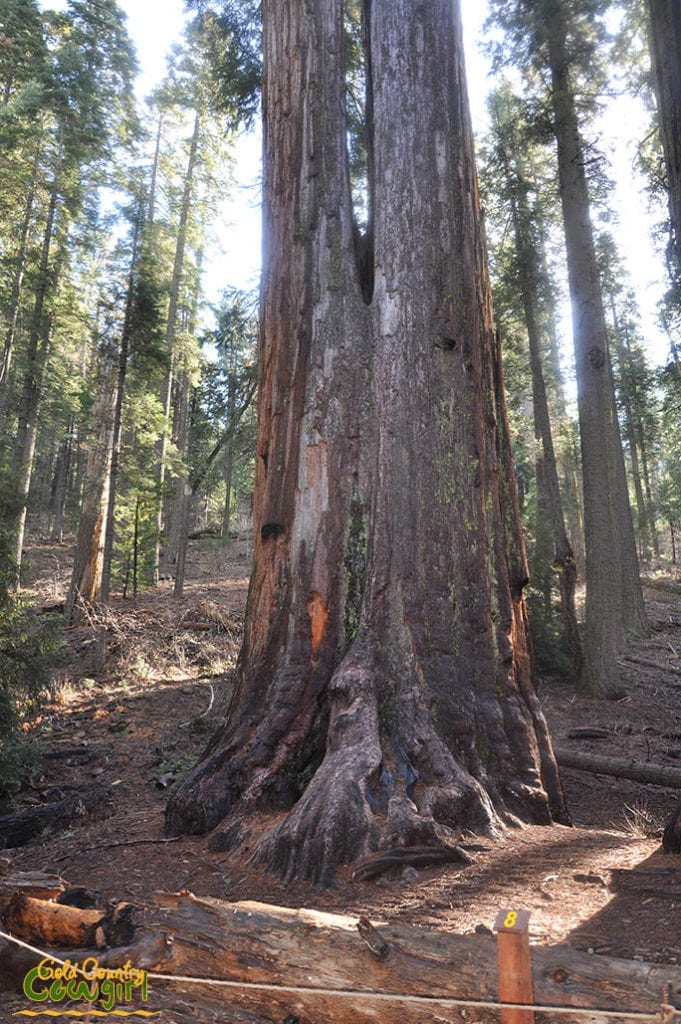
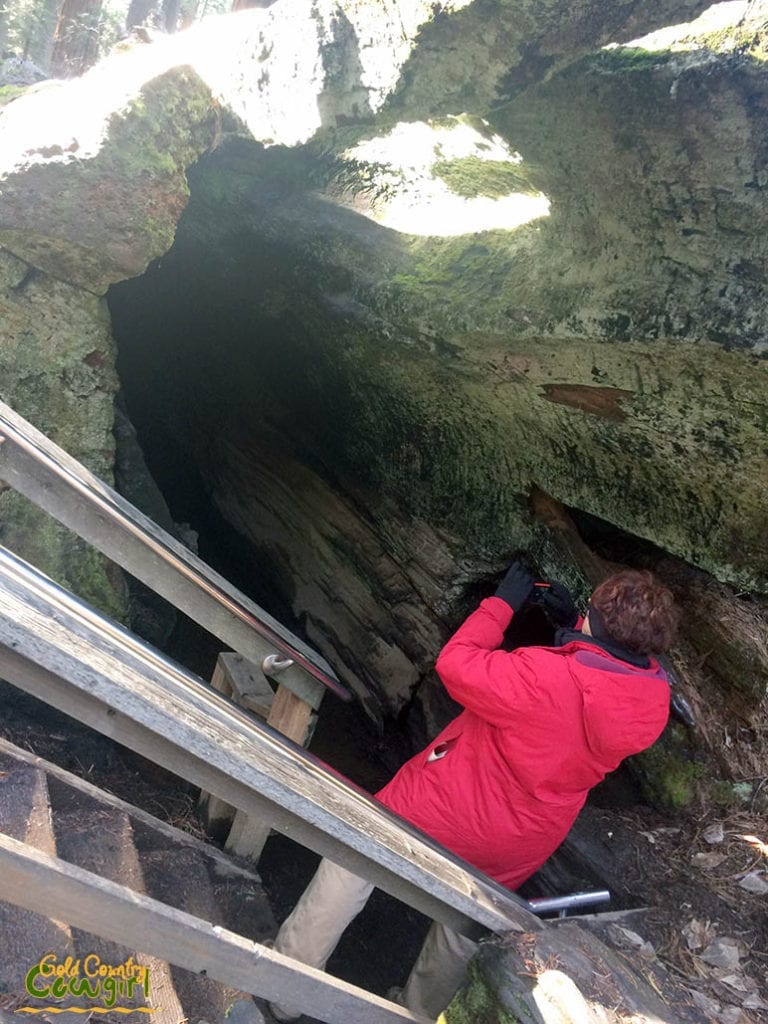
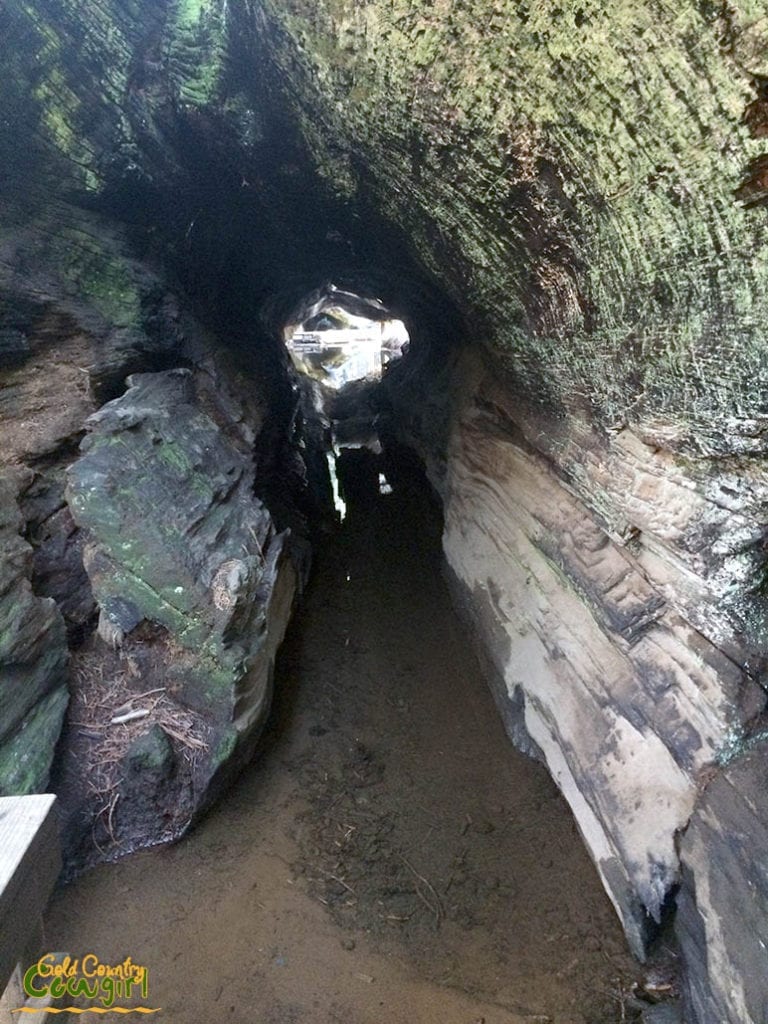

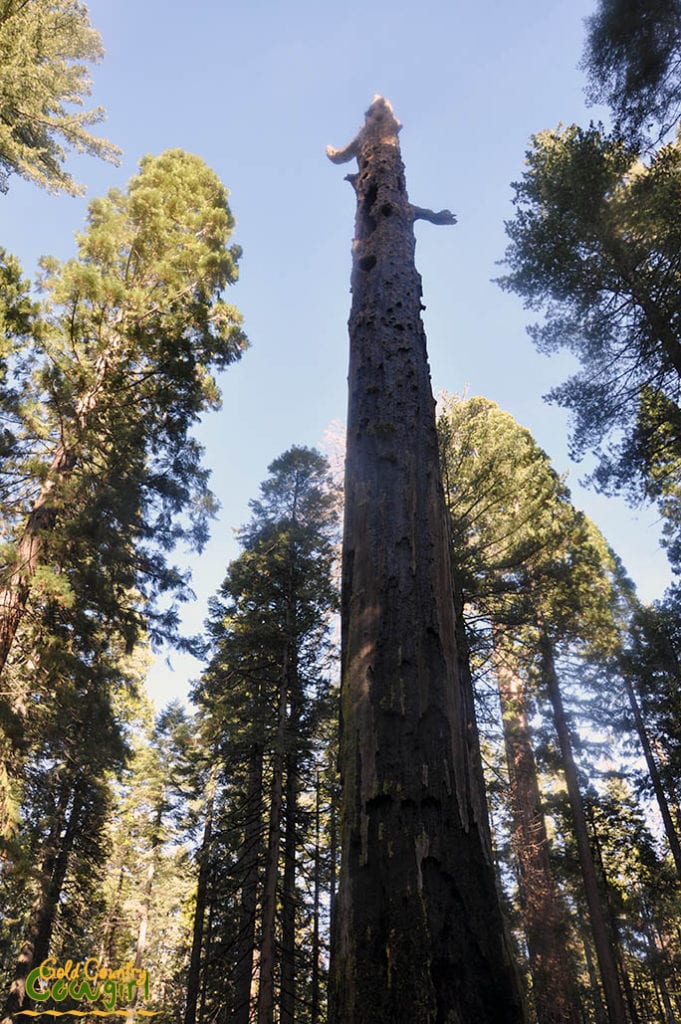


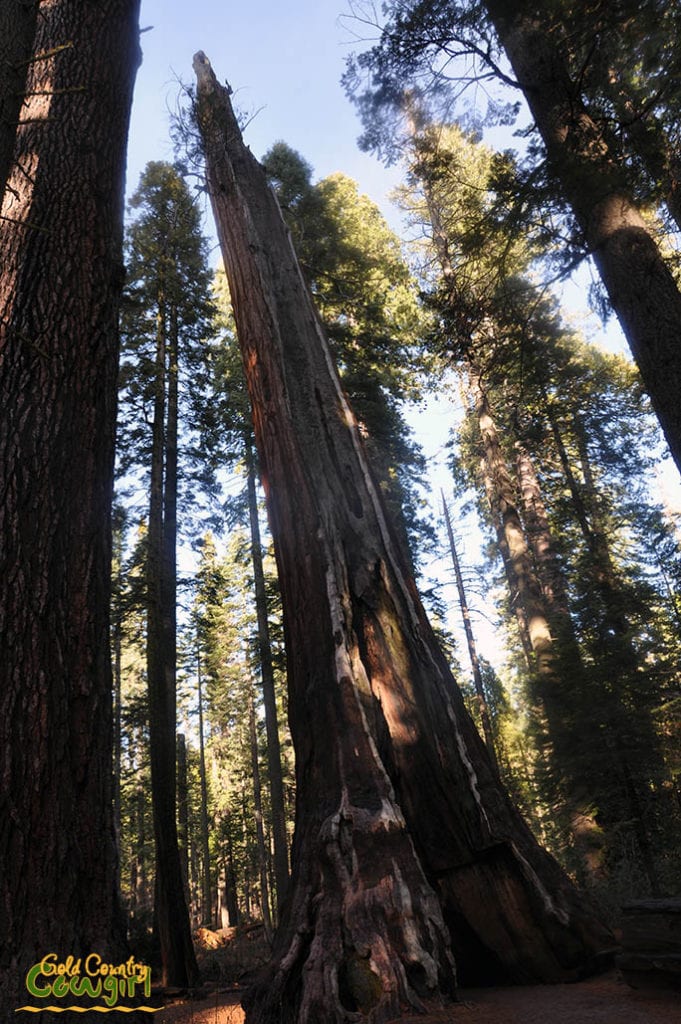

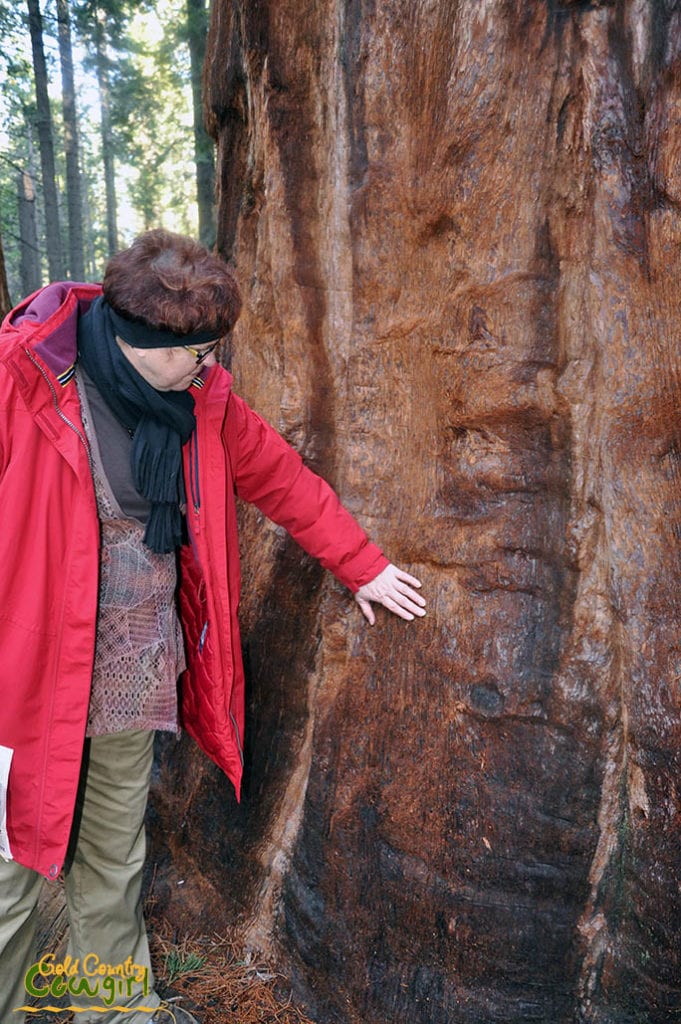
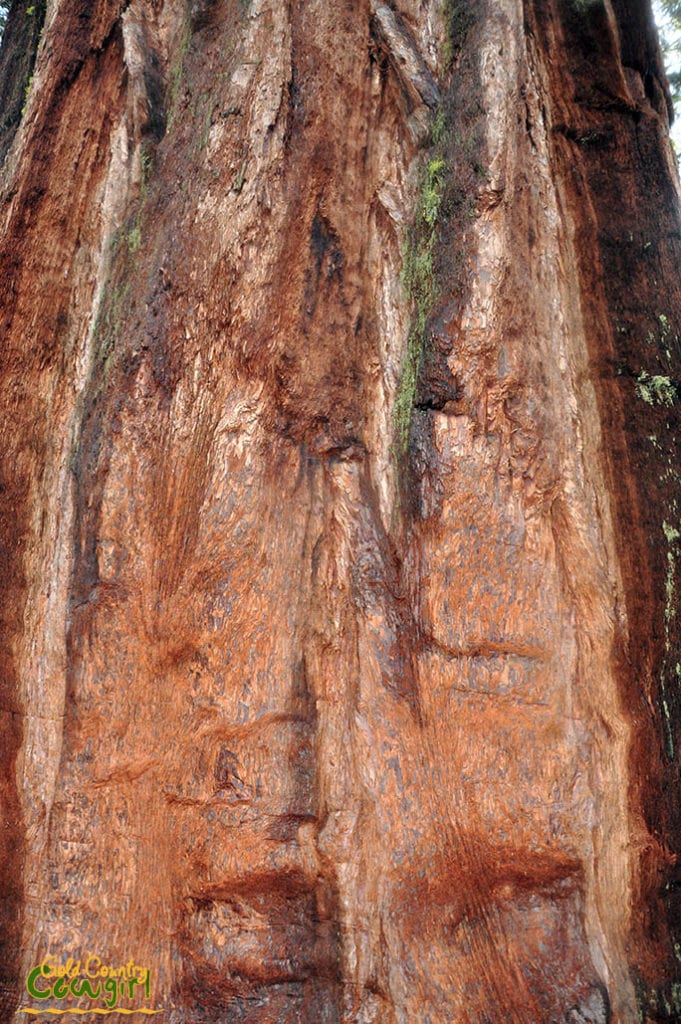
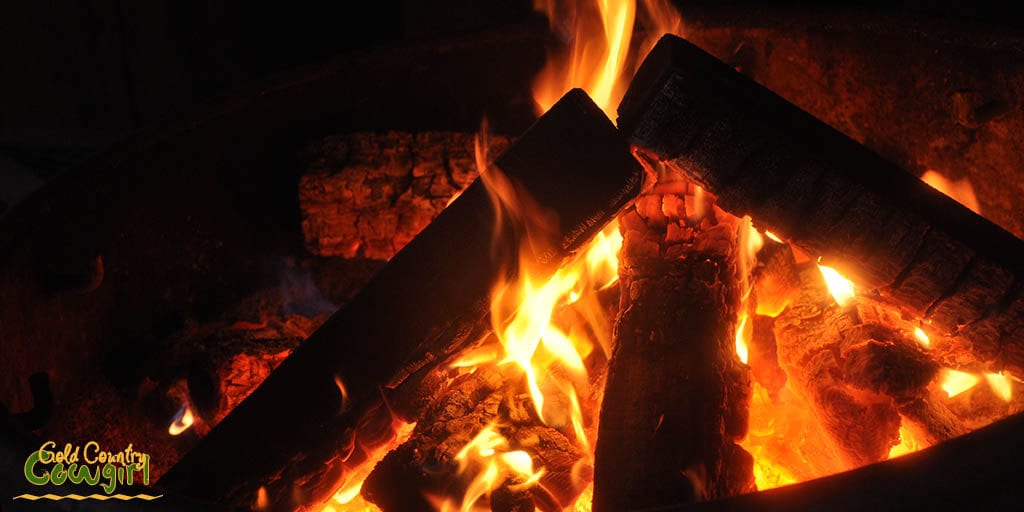

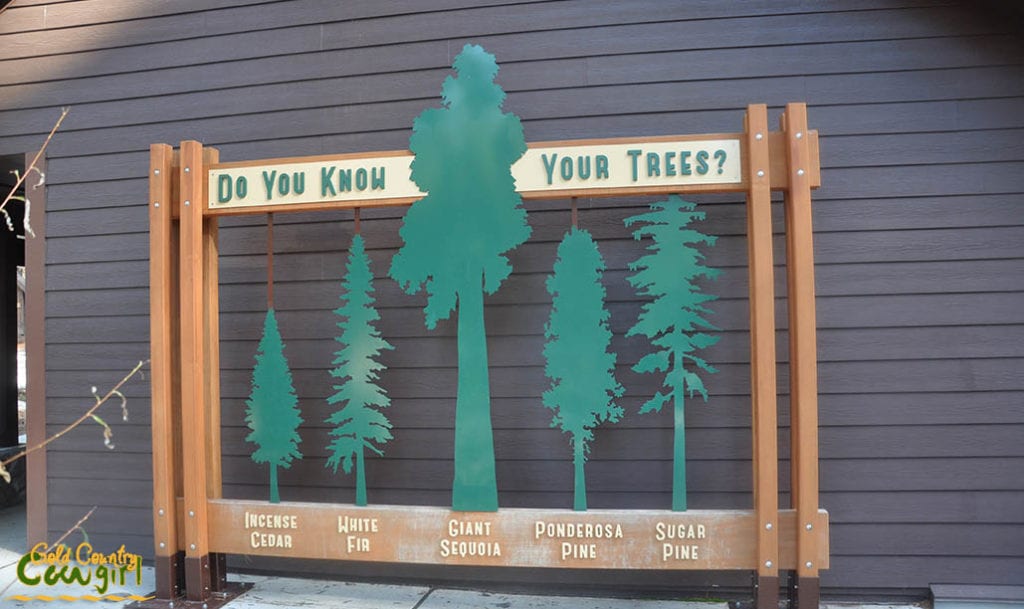

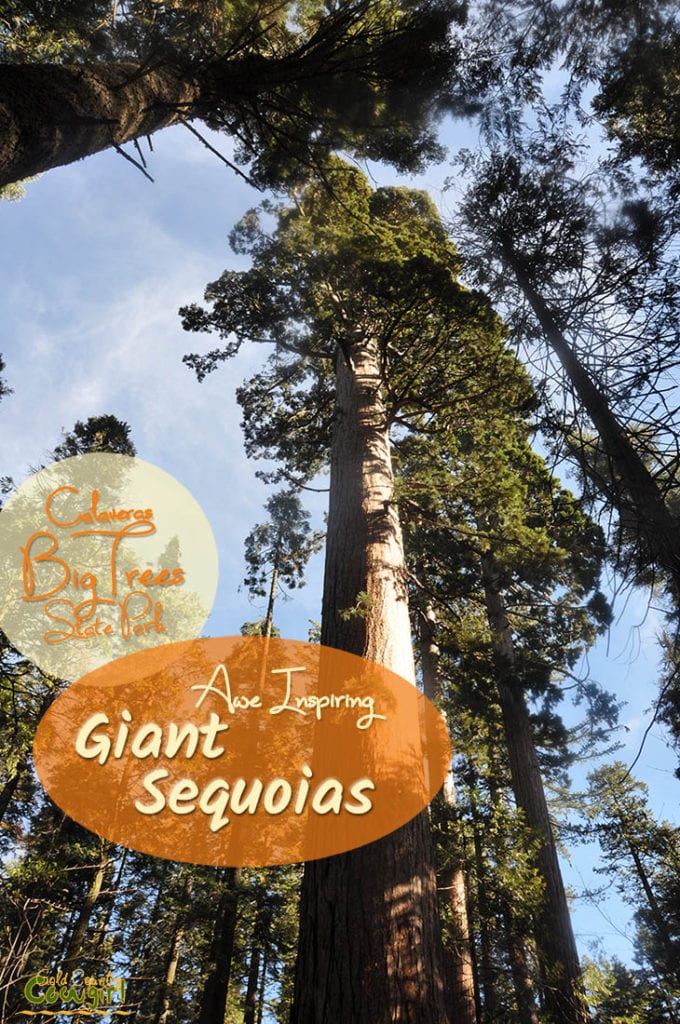

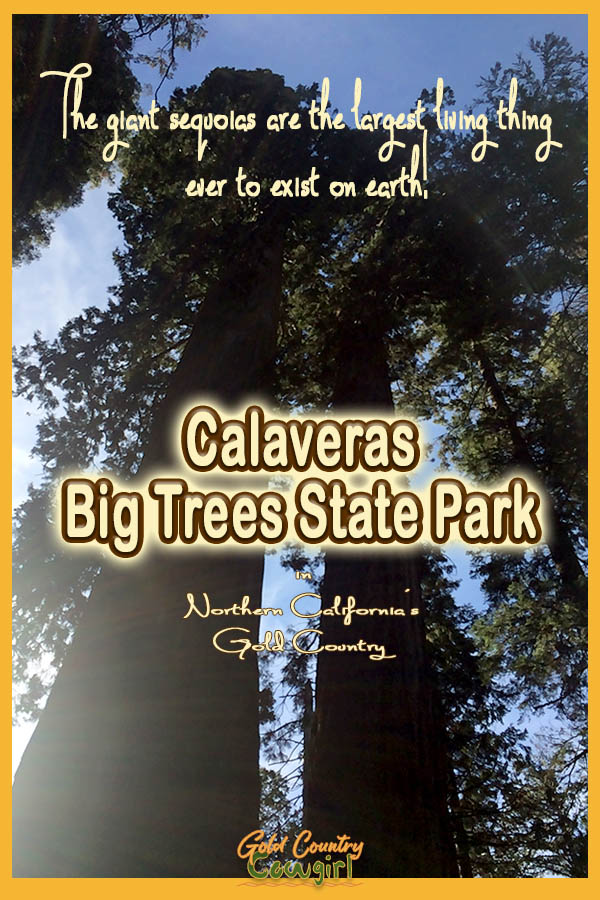
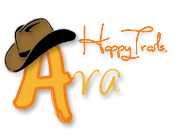

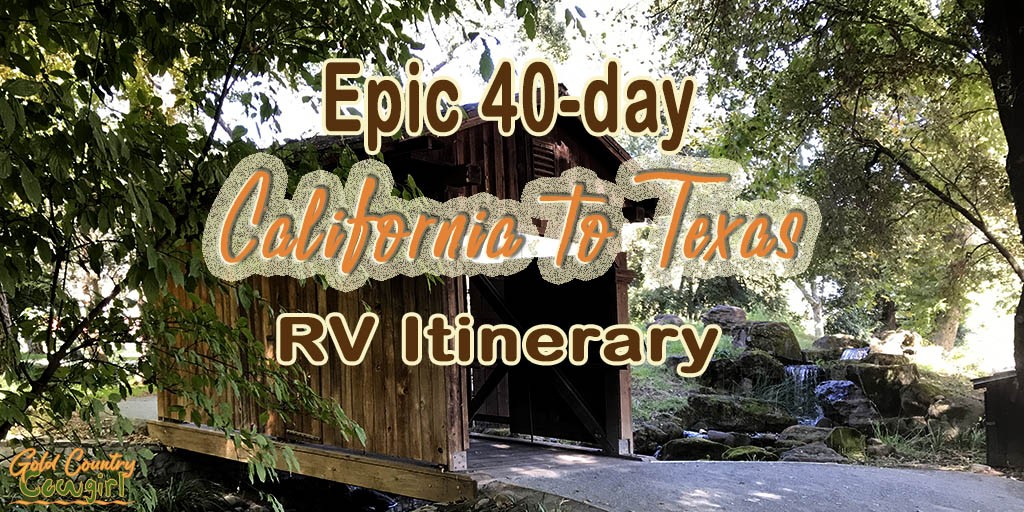
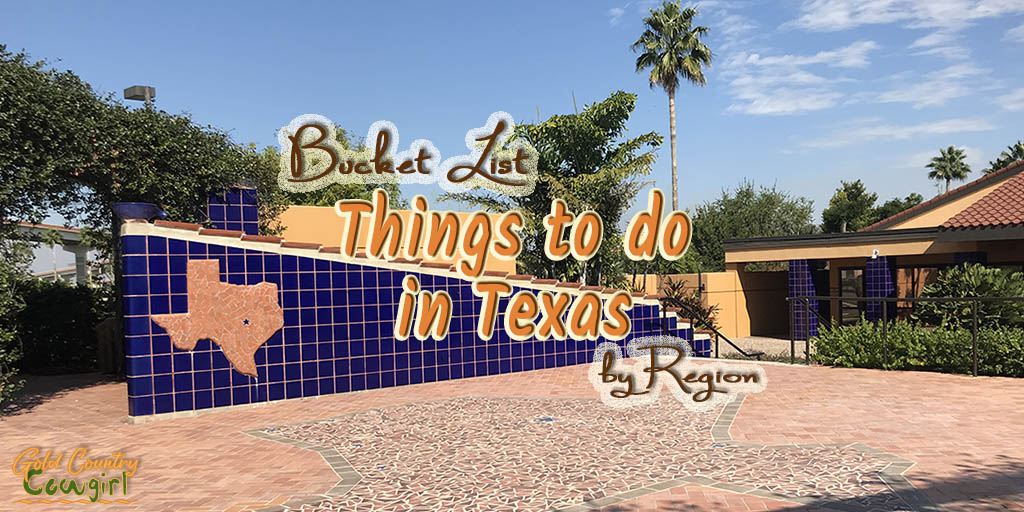
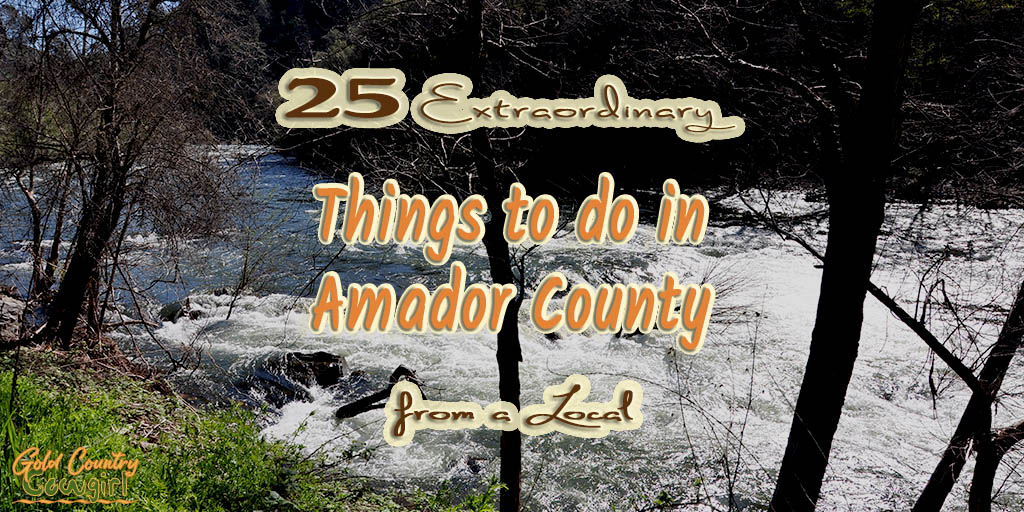
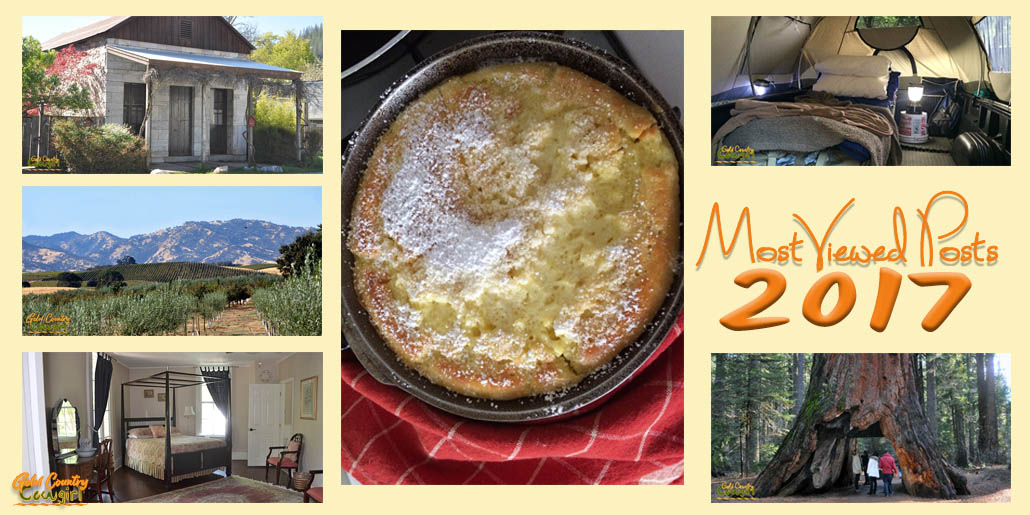
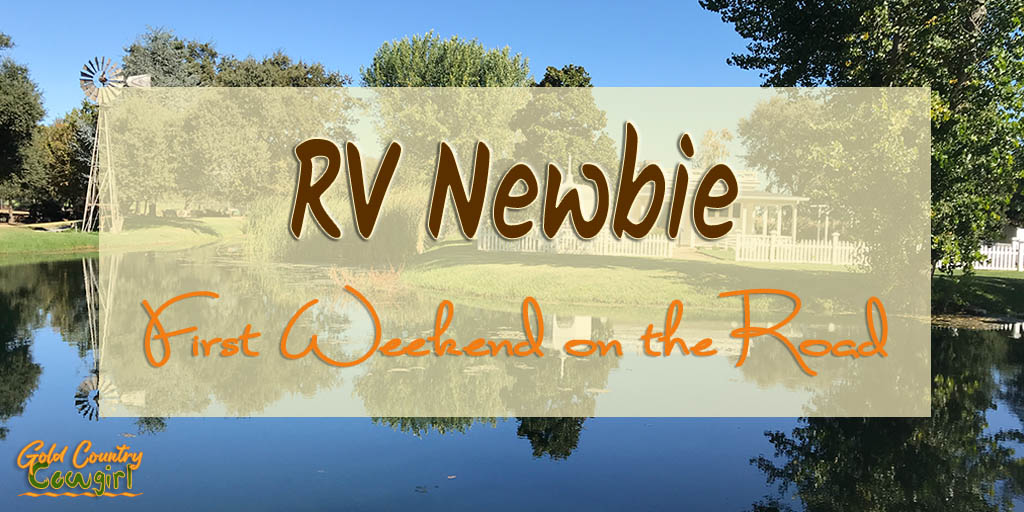

















Awe inspiring is definitely the best way to describe this! I could sit on that tilted back bench all day long and admire the beauty! Living in the Southwest, all I see is desert landscape, much different!
I moved here two years ago from Orange County so I know that desert landscape all too well! I hope I never start taking the beauty here for granted.
O man! What a great way to spend the day. Those massive trees and wooded lands are beautiful.
I love those sequias. We took this trip last year and visited them. They are awe inspiring. Your photos really did them justice.
Wow, this park looks like an incredible place to visit. Your photos of those sequoias are stunning.
Thanks, Izabela. It really was a wonderful experience.
Those are enormous! Especially when you realize that there is a hole a person can go through.
The tunnel is large enough for a car to go through! Sadly, that particular tree fell.
Pingback: Downtown Murphys -- More than Wine Tasting | Gold Country Cowgirl